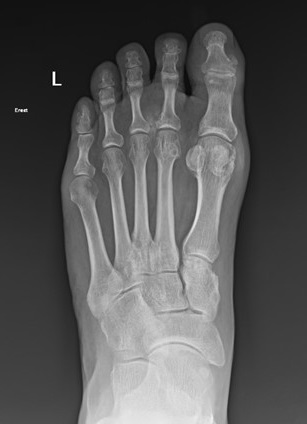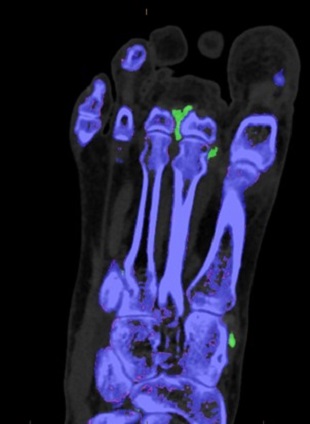Welcome to Orthosports Question for Physiotherapists April 2024. This month Dr John Negrine discusses the common condition of Gout.
SAVE THE DATE: Orthosports Annual Orthopaedic Updates, Saturday, 9th November 2024, live @UNSW or via webinar.
If you have a Question that you would like answered on this monthly email please send to education@orthosports.com.au

QUESTION | A 63 year old man presents with pain in the left forefoot intermittently. The pain is in the region of his second MTP joint, it is not necessarily activity related. He presents with forefoot swelling. His initial xrays were reported as normal but…
ANSWER | Gout is very common. The typical history is a man with a swollen, red painful big toe. In Charles dickens Mr Pickwick suffered with gout and it was attributed to his alcohol intake!
Gout is a disease with deposition of uric acid in joints and bursae. It is common in the foot now known because the crystal precipitates out in the cold and foot joints are cold (compared with say the knee or the shoulder).
The diagnosis is usually obvious but not always. Paradoxically the serum uric acid may fall during an acute attack which can confound the diagnosis.
Aspirating a red hot joint and sending the fluid for examination under polarised light will confirm the diagnosis (the needle shaped crystals are strongly negatively birefringent).
The case below illustrates an atypical presentation and a new method of making the diagnosis non-invasively.
The patient has a pacemaker and can’t have an MRI.
The diagnosis is usually obvious but not always. Paradoxically the serum uric acid may fall during an acute attack which can confound the diagnosis.
Aspirating a red hot joint and sending the fluid for examination under polarised light will confirm the diagnosis (the needle shaped crystals are strongly negatively birefringent).
The case below illustrates an atypical presentation and a new method of making the diagnosis non-invasively.
The patient has a pacemaker and can’t have an MRI.



Take home message: Dual energy CT scan is a relatively new non-invasive test for gout with very high sensitivity and specificity. False negatives can occur however in the setting of acute recent onset gout. False positives can occur in patients with advanced knee arthritis.

